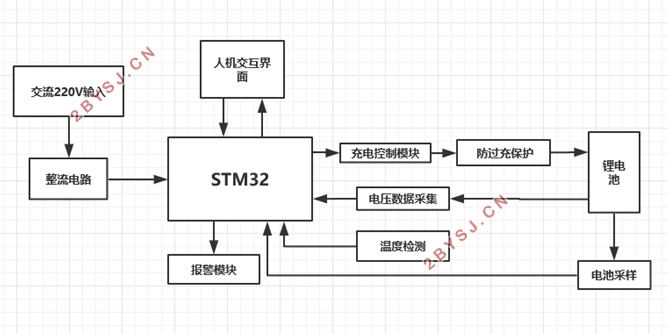微小功率智能充电器设计
无需注册登录,支付后按照提示操作即可获取该资料.
微小功率智能充电器设计(论文13000字)
摘要:微小功率智能充电器是针对手机锂电池设计的充电系统。它能根据待充电池自身状态选择合适的充电模式同时进行实时充电信息显示,并在完成充电后进行报警。在本设计中,智能充电系统结合充电芯片完成智能充电的同时,通过电压检测模块结合模数转换器采集电池的充电电压,并以曲线图的形式实时显示。除此之外,还利用不同元器件特性设计了防过充保护电路和报警模块,实现对待充电池的保护。在系统中还特别增加了触摸屏模块,并设计了UI界面以改善用户体验。实验结果表明,该款充电器可以很好的实现电池的快充、满充、自动断电、充满提醒、充电数据实时显示等功能。
关键词:智能充电;实时显示;电压检测;防过充保护
Micro power smart charger design
Abstract:The lithium battery intelligent charging device is designed for the mobile phone lithium battery, and selects the appropriate charging mode according to the state of the battery to be charged, and simultaneously displays the real-time charging information, and performs an alarm charging system after completing the charging or charging error. In this design, the intelligent charging system combines the charging chip to complete the intelligent charging, and the charging voltage of the battery is collected by the voltage detecting module combined with the analog-to-digital converter, and displayed in real time in the form of a graph. In addition, the anti-overcharge protection circuit and the alarm module are designed with different component characteristics to realize the protection of the rechargeable battery. A special touch screen module has been added to the system, and a UI interface has been designed to improve the user experience.The experimental results show that the charger can realize the functions of fast charging, full charging, automatic power-off , full reminder, real-time display of charging information and so on.
Key words:Intelligent charging;real-time display;voltage detection;anti-overcharge protection

目 录
1 绪论 1
1.1设计背景 1
1.1.1可充电电池的发展 1
1.1.2快充技术的发展 1
1.1.3国内外研究现状 2
1.2 设计目标及意义 2
1.2.1设计目标 2
1.2.2设计意义 3
1.3章节安排 3
2 智能充电器设计 3
2.1充电特性 3
2.2快速充电终止控制方法 4
2.3智能充电器架构 5
3 硬件设计 6
3.1硬件模块 6
3.1.1 单片机 6
3.1.2 电池充电芯片 6
3.1.3触摸屏模块 7
3.1.4电量计芯片DS2780 8
3.2 模块设计 9
3.2.1 电源部分设计 9
3.2.2 充电控制电路 9
3.2.3 电压检测回路 10
3.2.4防过充保护电路 10
3.2.5 剩余电量计算方法 11
3.2.6 报警模块 11
3.2.7 单片机控制模块 12
4 软件设计 12
4.1软件开发环境简介 12
4.2 程序设计 13
4.3可视化监控程序设计 13
4.3.1 STemWin介绍 14
4.3.2 设计工具 14
4.3.3 图形显示子程序设计 14
5 实验与调试 15
5.1 各模块实验及调试 15
5.1.1 电源模块 15
5.1.2 电压检测回路 15
5.1.3 防过充保护电路 16
5.1.4 通信模块测试 16
5.1.5充电控制模块调试 16
5.2综合调试问题及分析 17
5.3实验结果与分析 18
6 总结与展望 19
6.1设计总结 19
6.2展望 20
参考文献: 20
致谢 22
